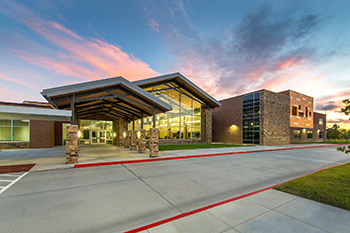By Guest Contributor | Wed, November 8, 17
This blog, including the information and statistics on asbestos and related diseases such as mesothelioma, was provided by Mesothelioma.com.
Older School Buildings and Asbestos
If there’s one thing that there’s no uncertainty about is that everything ages with time. Homes, buildings, and schools are no exception to this rule. Even today, many of these homes, buildings, and schools can contain harmful materials that can directly affect our everyday health.
We consistently hear stories that focus on how asbestos was discovered in a school and needs to be removed or about how the air we breathe at home, work, or school, can make us unwell.
Why are healthier schools needed? Schools stand for what we value as a society, and an investment in our children’s future. There’s an accompanying responsibility to deliver a learning environment where staff and students can thrive together. This environment should not be contributing to possible health risks.
Many school buildings were constructed years ago and can contain building materials that negatively affect our health, such as asbestos and lead. Part of the solution is to build high performance schools. Three objectives should be considered when describing a high performance school: to improve occupant health, to be environmentally-friendly, and to be energy efficient. The result is a hazard-free healthier learning environment.
What Is Asbestos?
Asbestos is a material that is formed by six naturally occurring minerals. When it was discovered, it was often used for its durability and ability to withstand high temperatures. Due to these strengths, many builders started using it as insulation and in a variety of other products.
Asbestos was commonly used for a variety of other products, including certain cements, roofing, shingles, and siding; insulation for water tanks, boilers, walls, ceilings, vinyl floors, basements, and attics; in part of homes such has gutters, window panels, and doors; and for coating on wires and automobile brake lines.
Today, in many older homes, buildings, and schools around the country, asbestos still is present. Asbestos that is properly installed, maintained, and has an encasing of some sorts (i.e. a wall or pipe around it) is not a direct health hazard.
However, it’s important to know as these older structures wear down over time, the asbestos is more likely to become damaged and easily airborne, where it can be breathed in. After it is breathed in, the rigid asbestos fibers get lodged in the body that can cause a number of long-term illnesses, including cancers.
History of Asbestos and Schools
The Environmental Protection Agency found in its 1980 original report that an estimated 34,000 schools, which contained 15 million students along with 1.4 million school employees that they further at risk of exposure to dangerous asbestos fibers. In 1988, after there was found to be a link between asbestos and cancer cases such as mesothelioma, the EPA then started issuing regulations for U.S. companies to report the asbestos used in their products. However, to this day there is still no federal ban on all asbestos products in the United States
Fast forward to 2013 where a sample collected by the National Center for Education Statistics found that the average age of a school structure building is 44 years old. That would bring us back to 1973, when there were little to no regulations on asbestos, VOCs, and lead paint. Inferring that many of these schools, as well as office buildings and homes around the country, can still contain these harmful chemicals.
Statistically wise, asbestos-related illnesses kill between 12,000 and 15,000 Americans each year. There is no safe level of asbestos exposure, so anyone exposed to any amount of asbestos is at risk for diseases. If you think yourself or a loved one was exposed to asbestos, bring attention to your physician right away!
 NEEP’s Solution to Healthier Schools
NEEP’s Solution to Healthier Schools
A great solution to these issues popping up in homes, schools, and buildings is to take a look at buildings from the perspective of occupant use and health. Initiatives by NEEP have already been started, leading to healthier homes and schools.
There have been a number of successes already, including the energy efficient, green and healthy home initiatives that took place in Rhode Island. It was astonishing to see the link between an unhealthy home and health. The report shows that 67 out of 430 students in an R.I. elementary school missed at least a month of school due to asthma-related absences. Through this initiative, they were able to help home health by replacing outdated and old home systems and updating them while removing harmful hazards during the process!
Moving on to the problems in schools, the focus should be on making our current educational buildings into high performance schools to our children, faculty, and staff. These high performance schools have a direct impact on the children and staff health due to the increase in indoor air quality it would provide. Furthermore, lead, asbestos, and other toxic hazards could be removed to ensure that no student or staff’s health is being affected.
Lastly, the goal would be for every school and building to be considered a zero energy building. These buildings do not consume more energy than it outputs and saves valuable renewable resources year over year.
